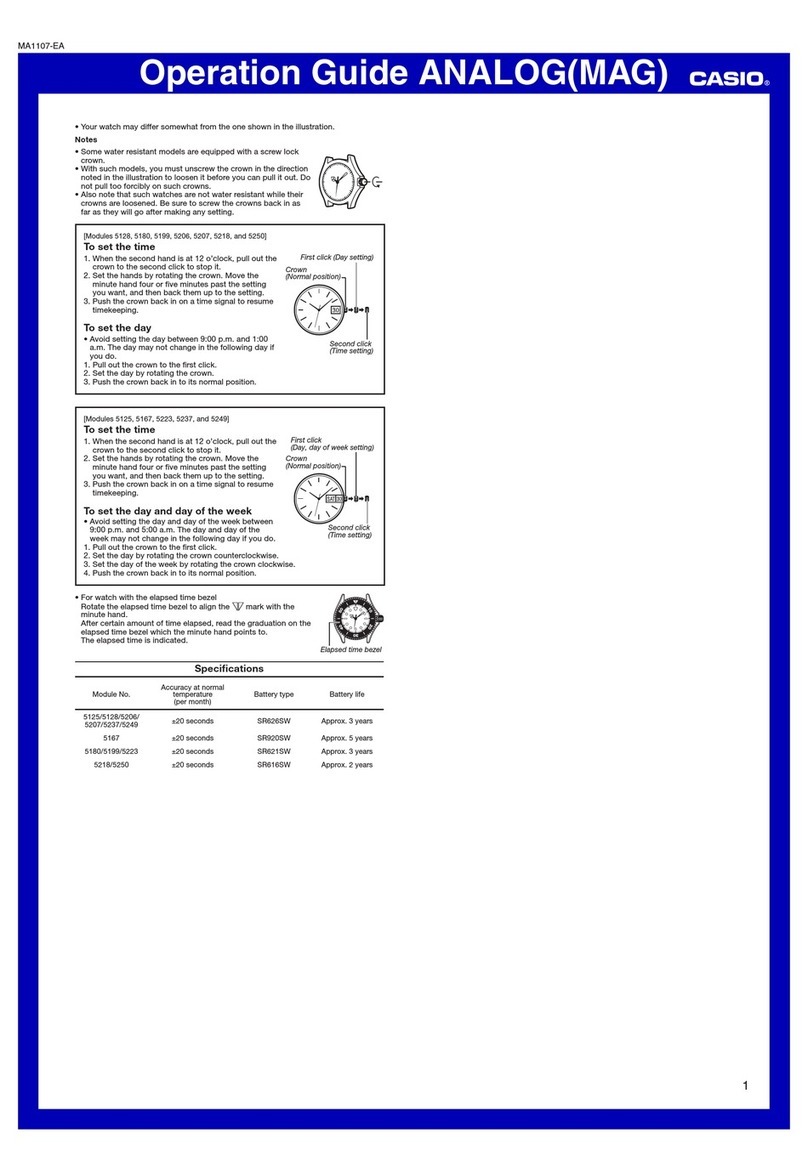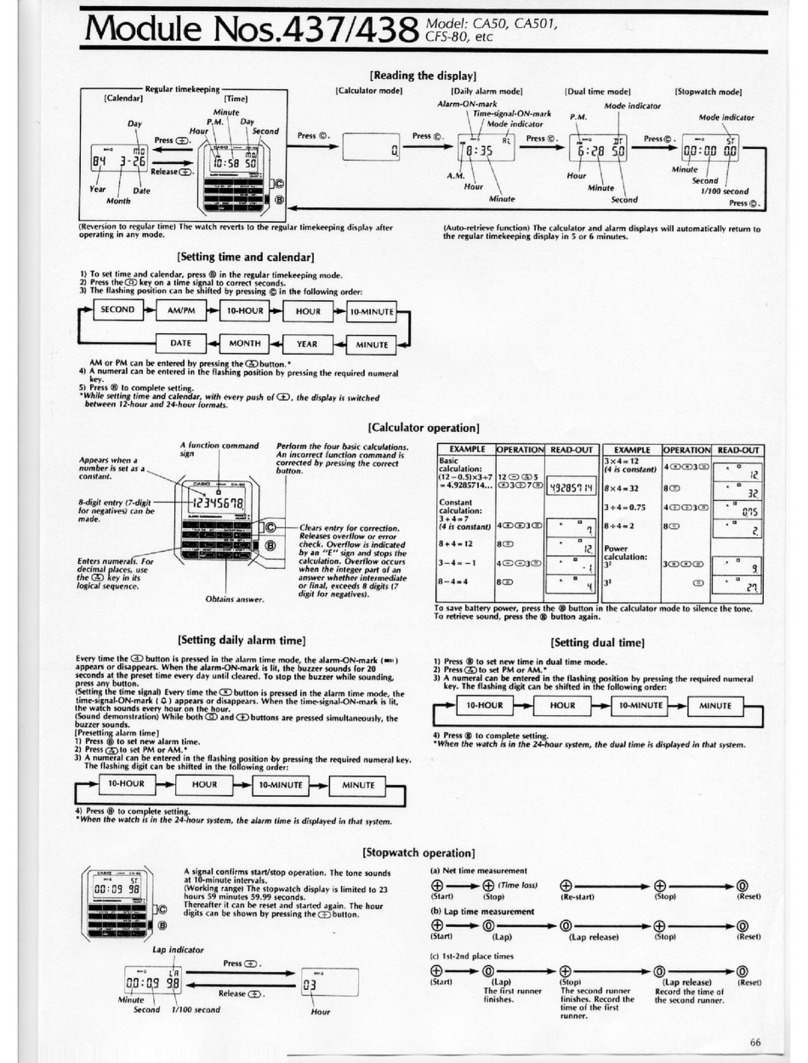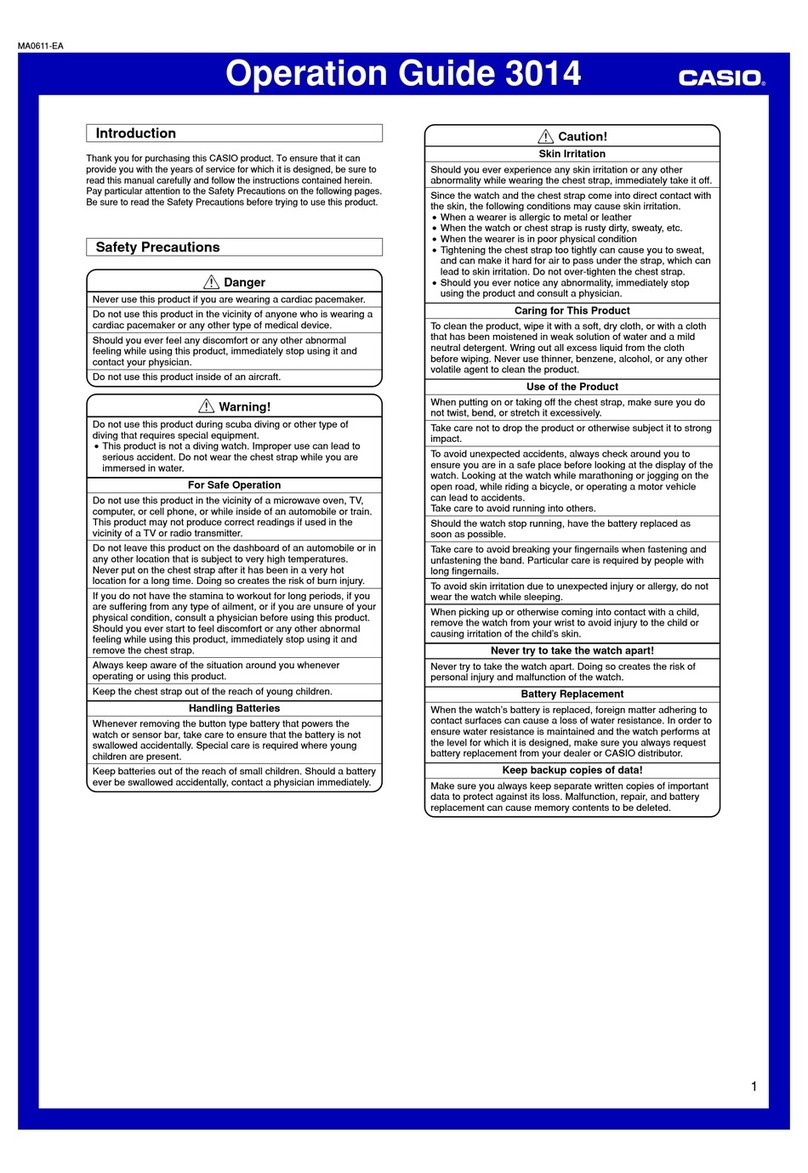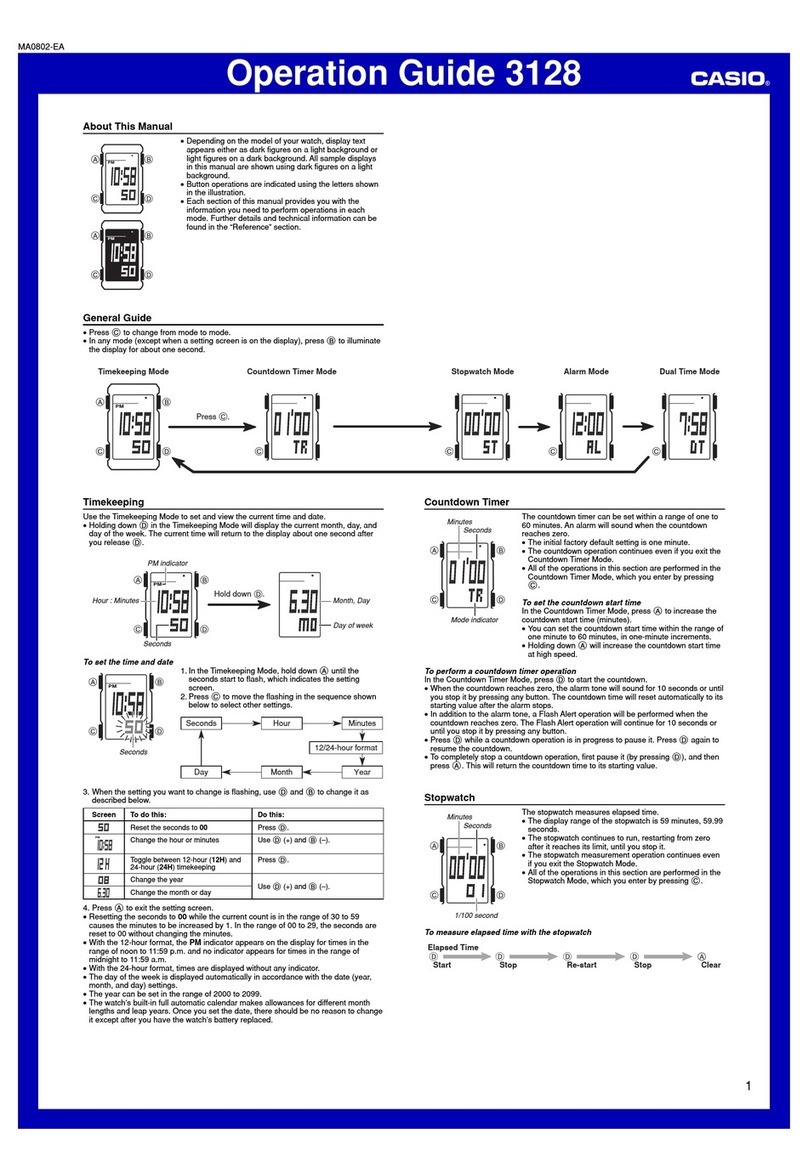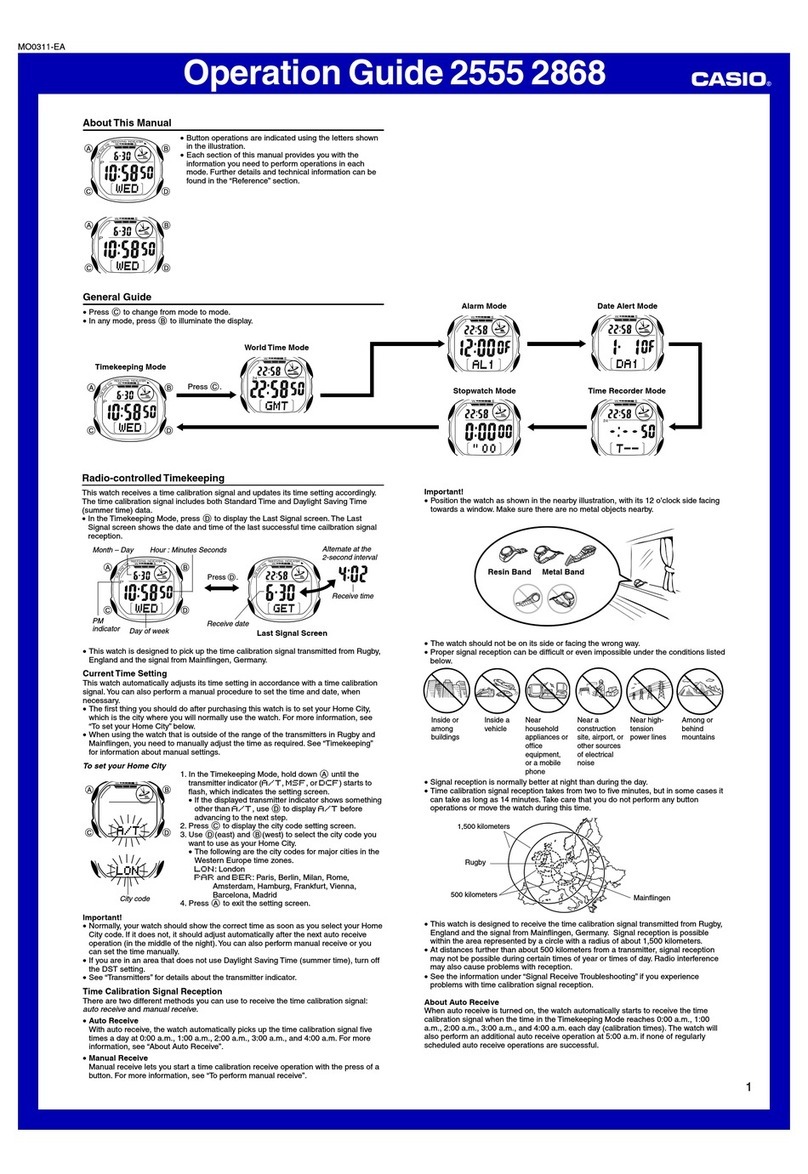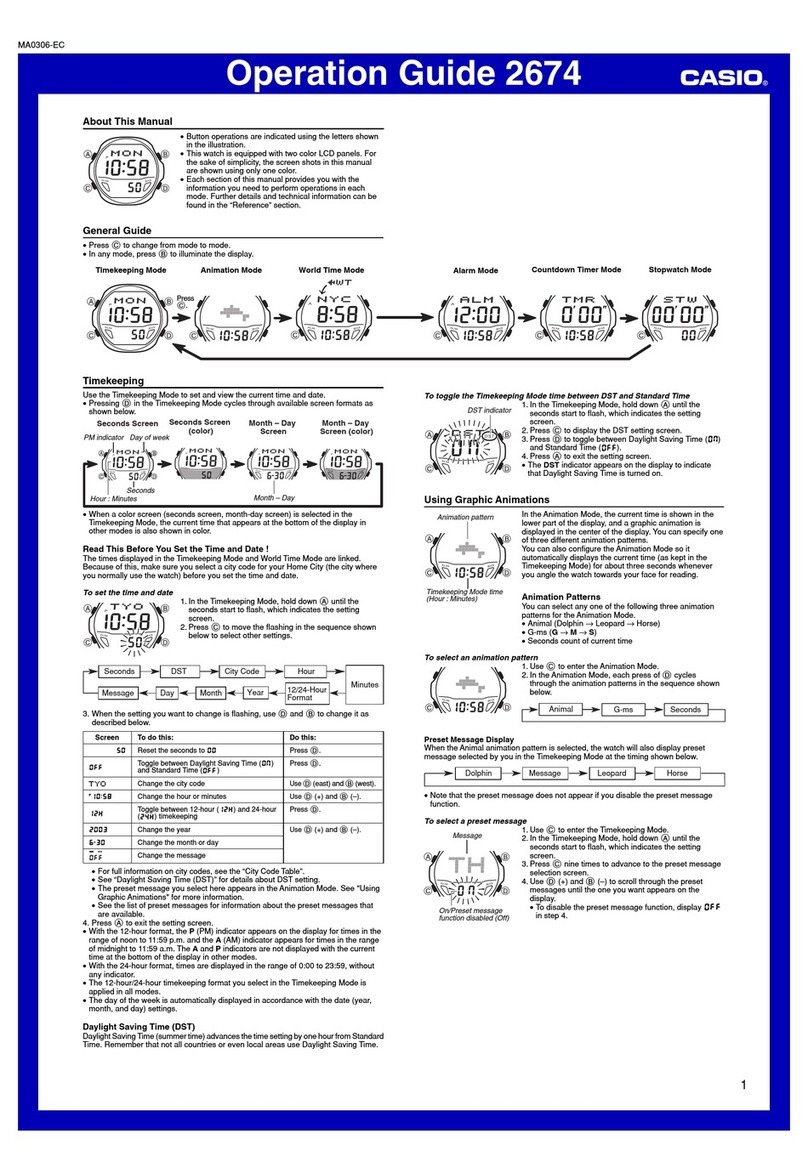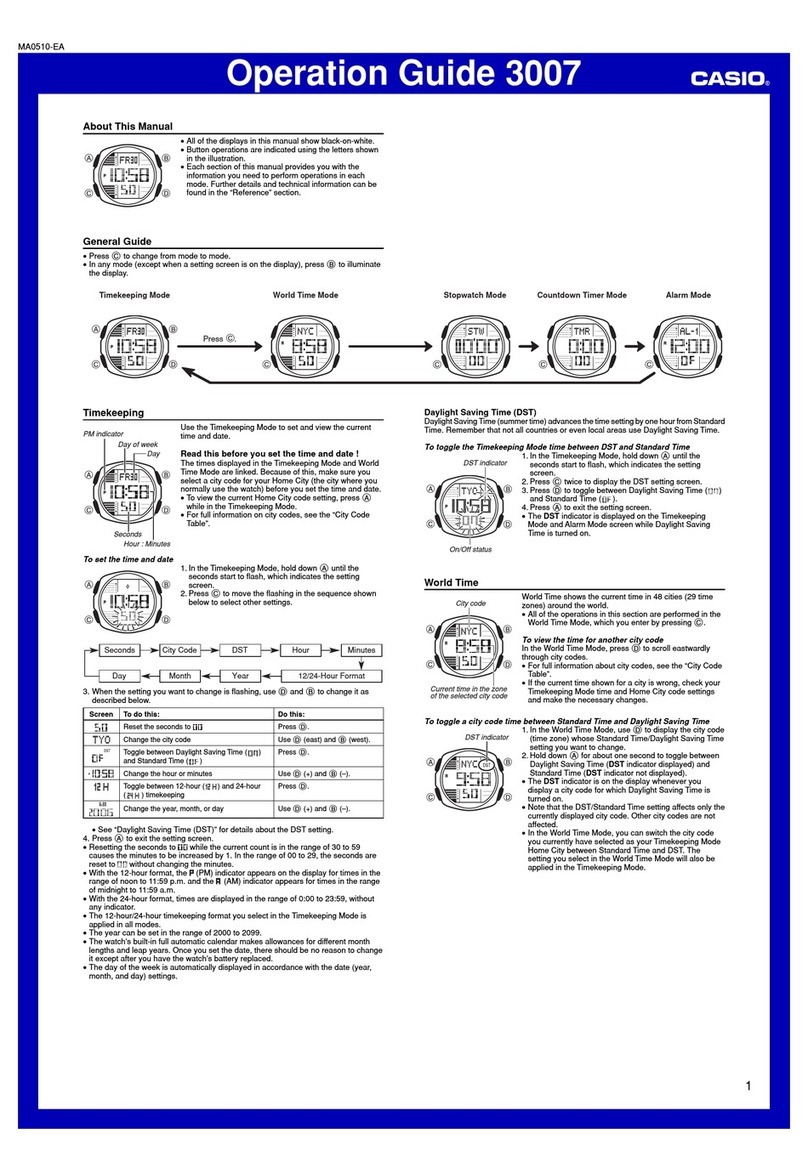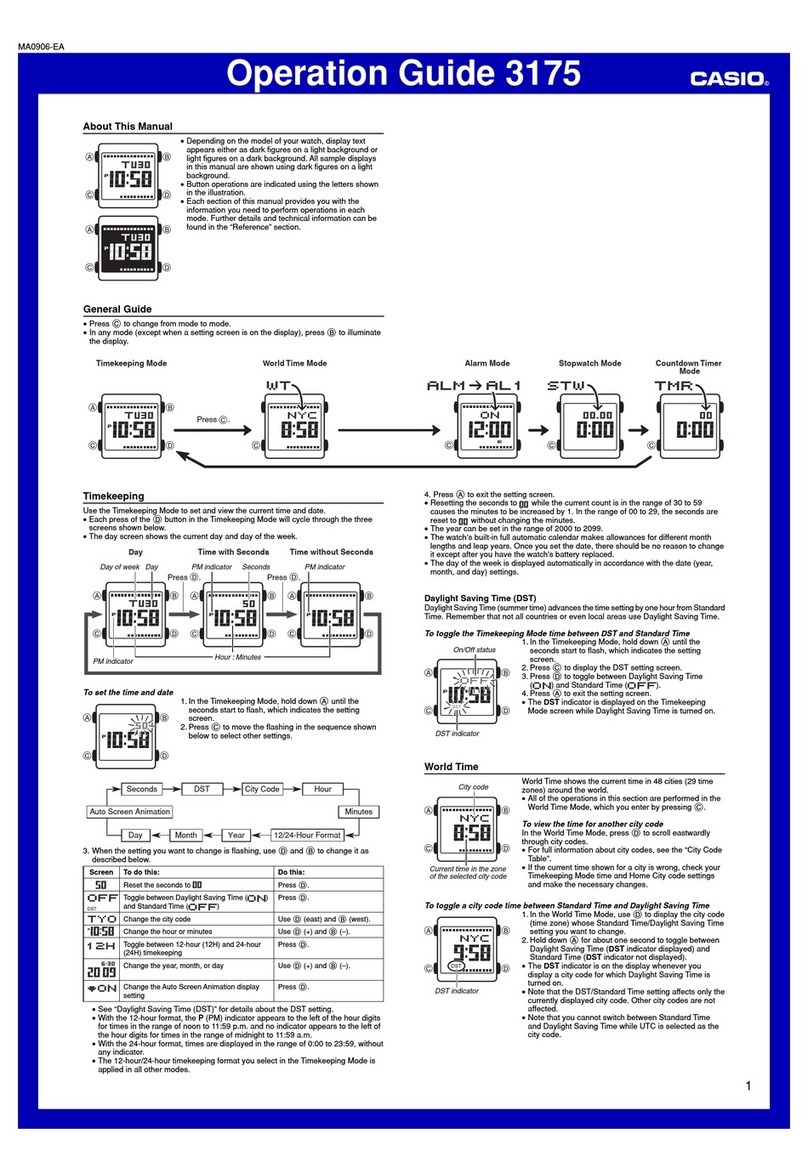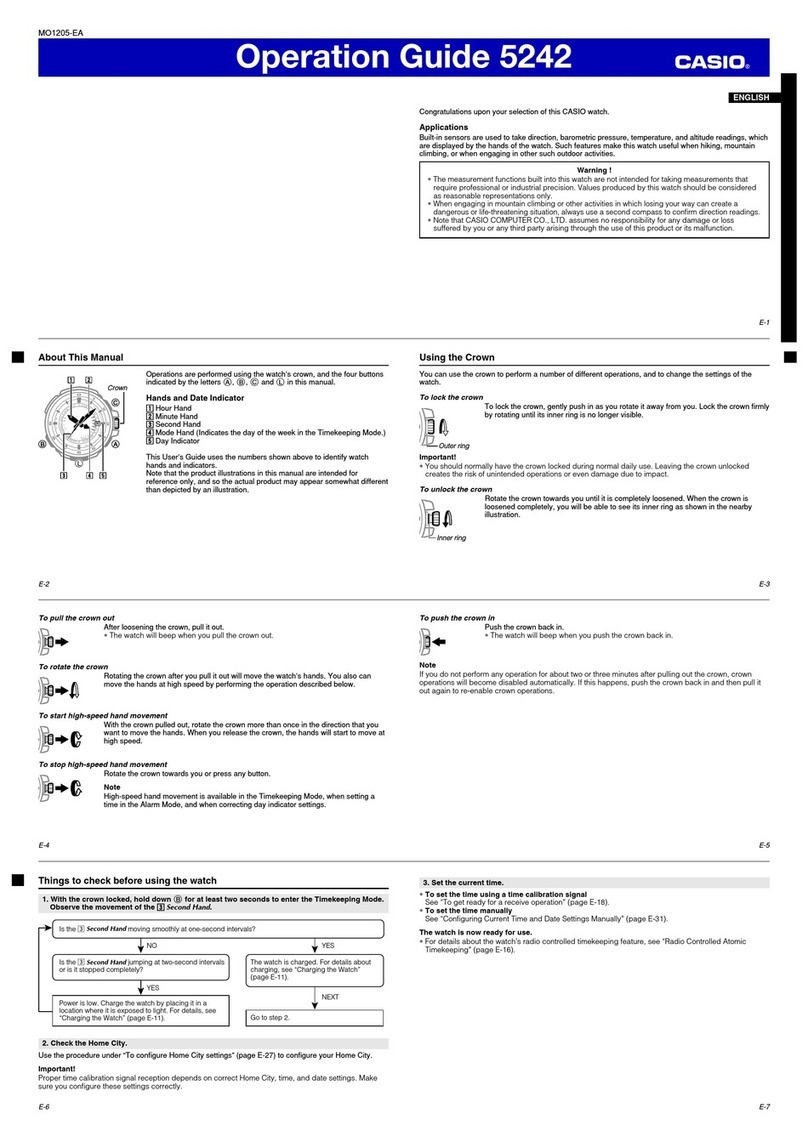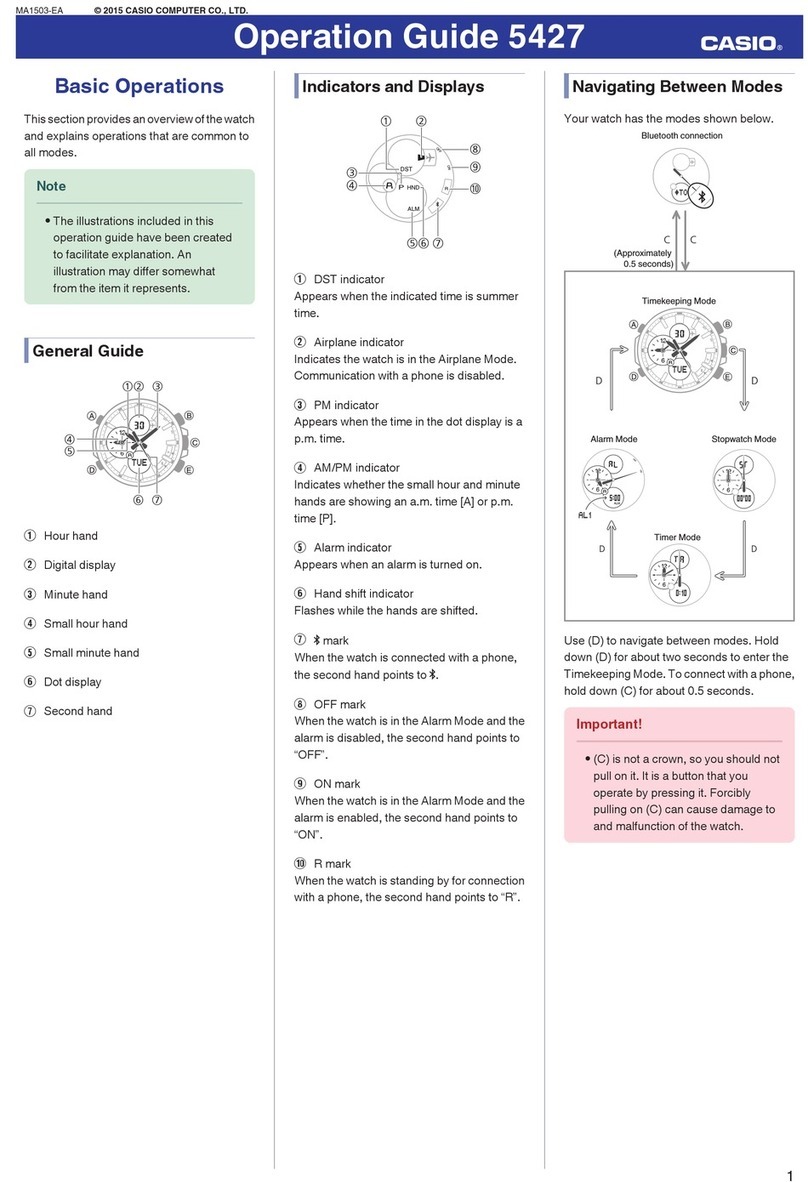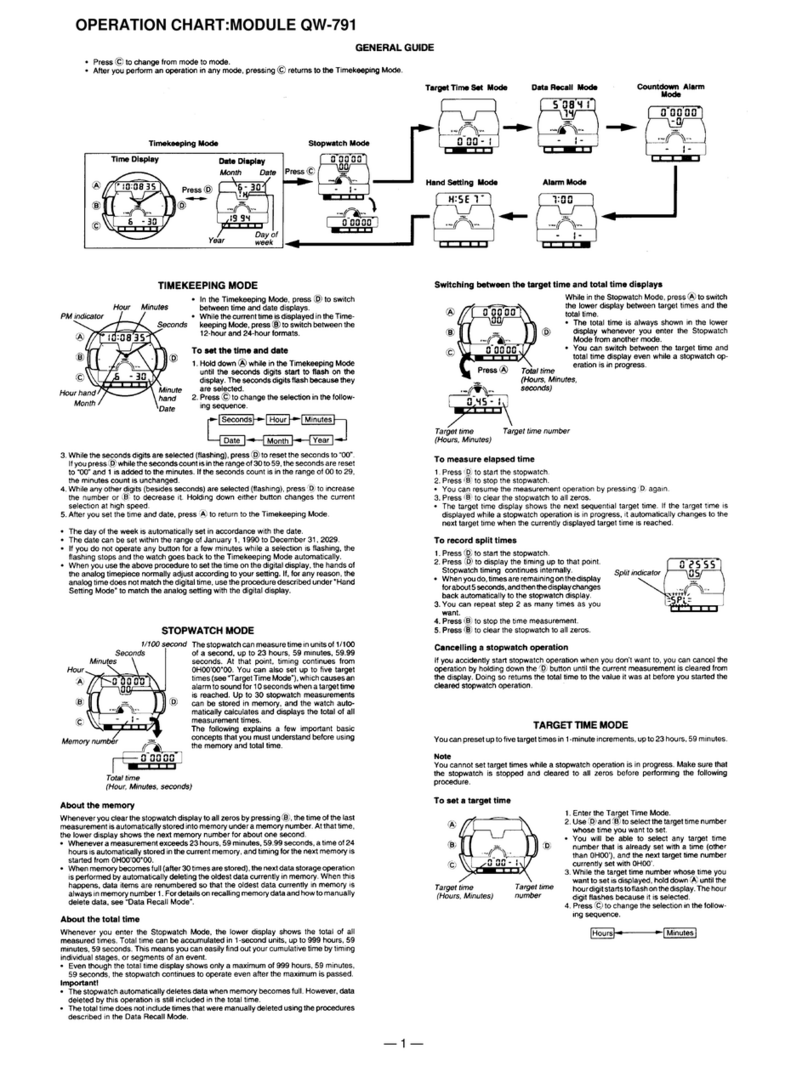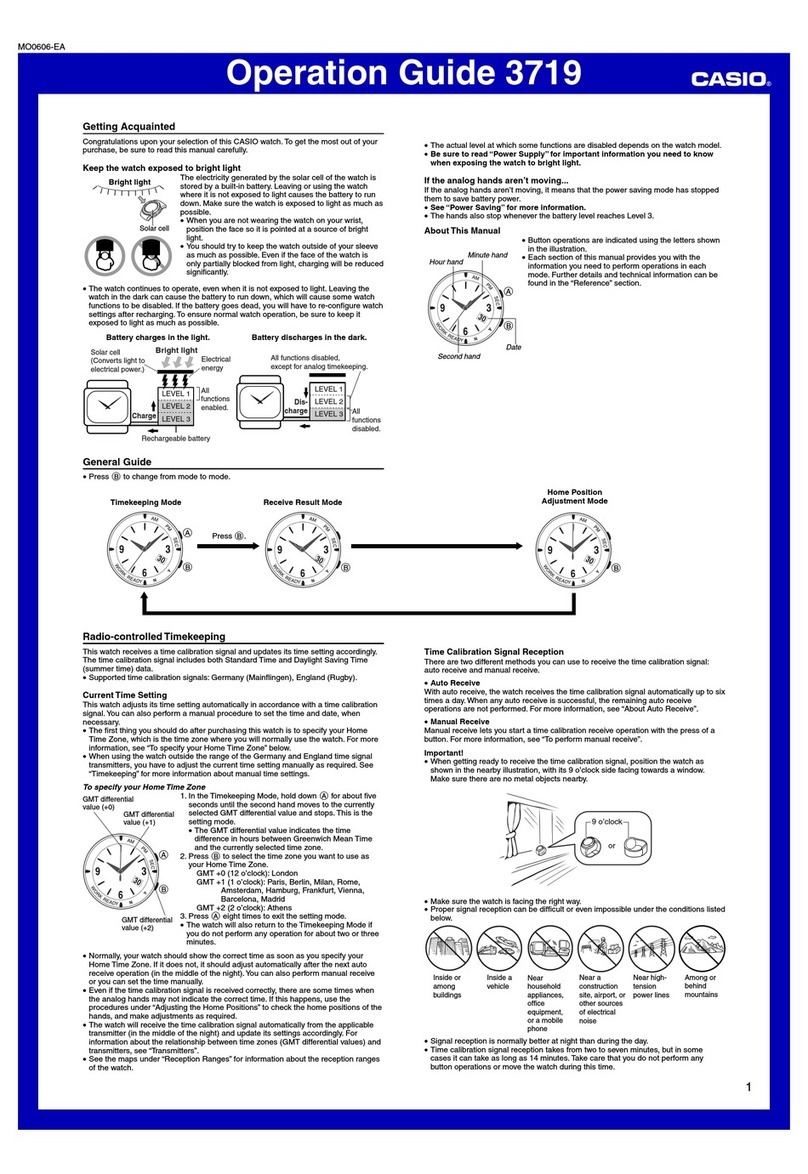
Operation Guide 5273
E-19
Important!
Pulling out the crown to click 2 to perform the above procedure causes current
timekeeping to stop. Because of this, the current time setting and the alarm time
setting will be different when you push the crown back in. After performing the above
procedure, be sure to correct the current time setting and adjust alarm time setting
so it is the same as the current time setting (to turn off the alarm).
E-18
Correcting the 0 Positions of the Stopwatch Hands
Perform the following procedure if the stopwatch hands do not return to their 0 (zero)
positions when you reset the stopwatch.
Pull the1. Crown out to Click 2.
Hold down2. Afor about three seconds, the Stopwatch Minute Hand will rotate
to indicate the minute hand setting mode.
If the hand does not align with 12 o’clock, use the
xBbutton to adjust it.
Holding down
xBmoves the current hand at high speed.
Hold down3. Afor about three seconds, the Stopwatch 1/5-second Hand will
rotate to indicate the second hand setting mode.
If the hand does not align with 12 o’clock, use the
xBbutton to adjust it.
Holding downxBmoves the current hand at high speed.
After all of the hands are the way you want, push the4. Crown back in.
E-17
Note
ThexStopwatch 1/5-second Hand and Stopwatch Minute Hand move for only the first
60 minutes of an elapsed time operation. After that, they stop at the 12 o’clock
position.
The stopwatch will not operate while the second hand is jumping at two-second
x
intervals, which indicates that the watch’s charge is low.
If a low charge state (indicated by the second hand jumping at two-secondx
intervals) is entered while a stopwatch operation is in progress, the stopwatch will
reset automatically to zero.
E-16
Two finishes
AB A B B
Start Split
First runner
finishes.
Display time of
first runner.
Stop
Second runner
finishes.
Split release
Display time of
second runner.
Reset
Important!
Do not operate the stopwatch with the crown pulled out.
E-15
Using the Stopwatch
The stopwatch measures elapsed time in 1/5-second increments up to 59 minutes,
59.8 seconds.
Elapsed time
AA A A B
Start Stop Re-start Stop Reset
Split time
AB B A B
Start Split Split release Stop Reset
E-14
To change the day indicator setting
Pull the1. Crown out to Click 1.
Rotate the2. Crown away from you to set the day.
Push the3. Crown back in.
Note
The day indicator setting uses a 31-day month. Make adjustments for months ofx
shorter lengths.
Avoid changing the day indicator setting between the hours of 9 p.m. and 1 a.m.
x
Otherwise, the day indicator may not change correctly at midnight.
E-13
Setting the Current Time and Day
To adjust the time setting
When the second hand is at 12 o’clock, pull the1. Crown out to Click 2.
Rotate the2. Crown to change the time setting.
If you want to turn off the alarm, use3. Bto move the alarm hands so they
indicate the same time as the current time hands.
Holding down
xBwill move the alarm hands at high speed.
Push the4. Crown back in.
Note
Take care that you set the correct AM or PM time.x
When changing the time, move the minute hand four or five minutes past your finalx
setting, and then back it up to the setting you want.
E-12
Indicators and Crown Operation
Second Hand
Day Indicator
Click 2
Hour Hand
Minute Hand
Alarm Minute Hand
Crown
Click 1
Stopwatch Minute Hand
Alarm Hour Hand
Stopwatch 1/5-second Hand
Stopwatch functions Alarm functions
E-11
Note
Actual charging time depends on environmental conditions.
Over-charge Protection
Charging stops automatically when a full charge is attained. This protects against
over-charging.
E-10
Charging Time to Recover from Dead Battery
Exposure Level
(Brightness)
Approximate Charging
Time to 1-second Hand
Movement
Approximate Time to
Full Charge
Outdoor sunlight (50,000 lux) 3 hours 24 hours
Sunlight through a window
(10,000 lux) 11 hours 94 hours
Daylight through a window on
an overcast day (5,000 lux) 18 hours 144 hours
Indoor fluorescent lighting
(500 lux) 175 hours – – –
Important!
The watch will continue to run for about five months after a full charge, even if it is
not exposed to light. For stable operation, however, expose it to light as much as
possible.
